Welcome to part 5 of me documenting what we are learning about owning a travel trailer. We are extremely new to this so I’m sure some of the things I mention will be wrong. Also, some of what I’m going to talk about is specific to our situation. So what works for our trailer may not make sense for yours. But my main goal is to give general advice that can help other first timers regardless of what type of travel trailer is in your future.
Batteries
In part 4 of this series, I discussed the basics of towing. Another complicated topic that comes up often is batteries. How you plan on using your travel trailer will help determine your ideal battery setup. But before we get to that, let’s go over the different battery types along with their pros and cons.
Flooded Lead Acid
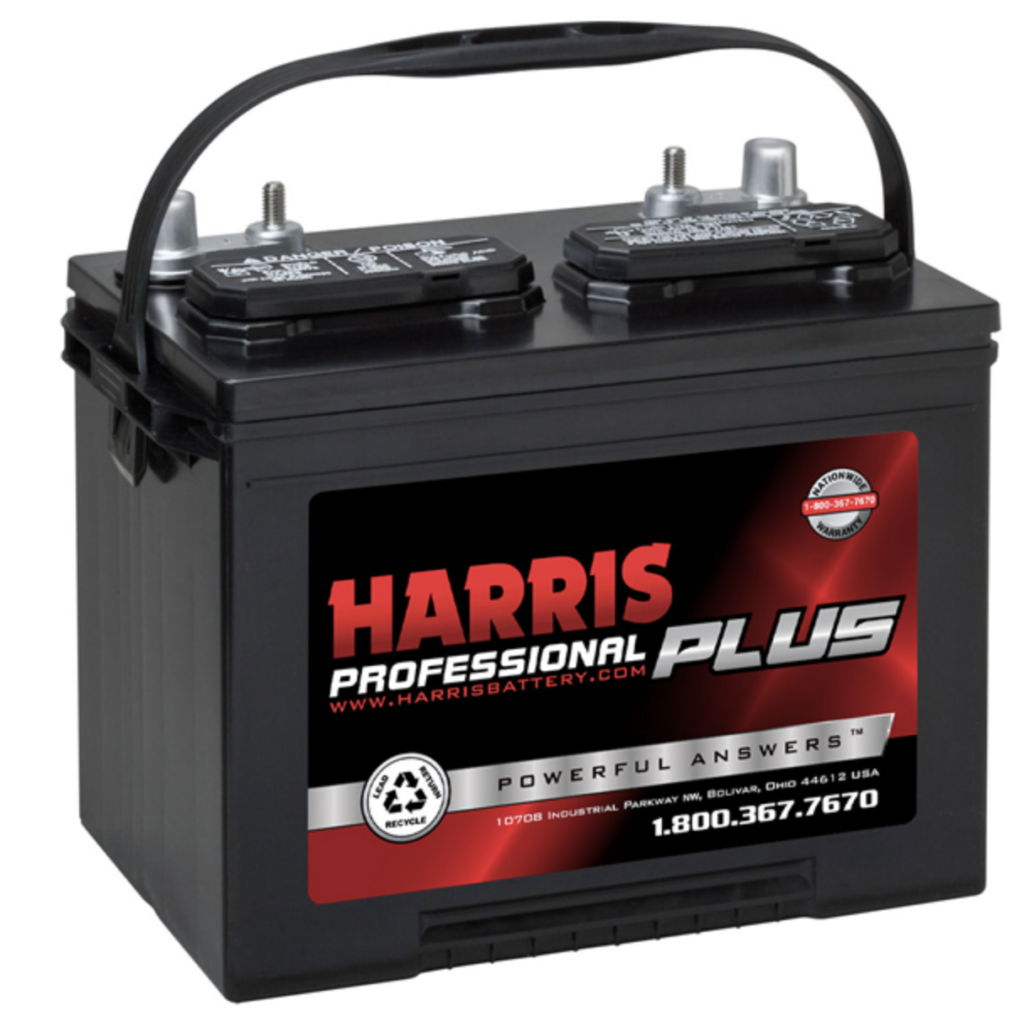
The cheapest battery type for travel trailers is the flooded lead acid. These are also referred to as wet cell batteries because they contain a liquid electrolyte. That liquid has to be monitored and replenished from time to time. It also gives off a gas, hydrogen sulfide, which is poisonous so the battery needs a way to vent that gas. That means they can’t be installed in enclosed areas like storage compartments.
Another major consideration is the battery’s capacity. One of the limitations of flooded lead acid batteries is that they should never be discharged below 50%. Doing so can damage the battery decreasing it’s overall capacity and shortening it’s life. That means if you have a 100Ah battery, you really only have 50Ah of usable power.
Pros:
- Cheapest option
Cons:
- Heavy
- Requires maintenance
- Must be installed upright, in an area with proper ventilation
- Discharging below 50% can damage the battery and decrease it’s capacity and life
AGM
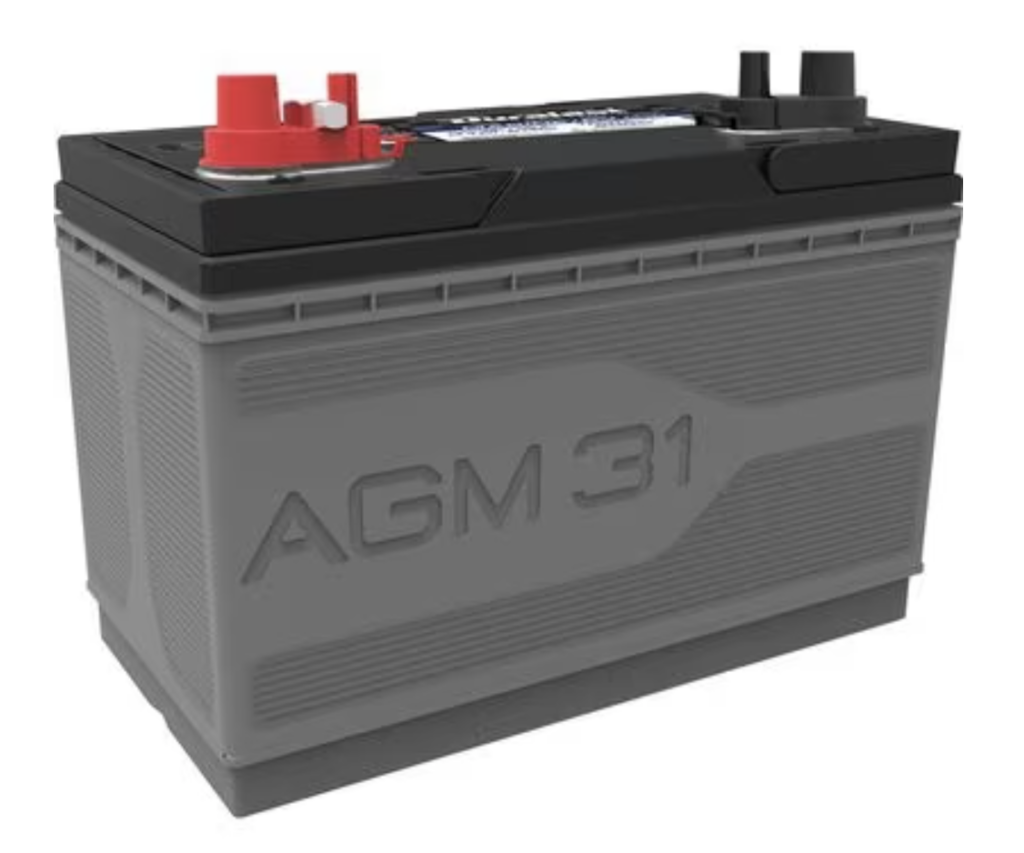
AGM, or Absorbed Glass Mat, batteries are also a type of lead acid battery, but they are sealed. Instead of water inside they contain a gel that doesn’t have to be replenished. The glass mat inside absorbs the majority of the gasses created internally. While it’s far less likely than with flooded lead acid batteries, there is still a chance that AGM batteries will need to vent excess gases. For this reason they should also be installed upright in an area where they can safely vent.
AGM batteries also have the same limitation when it comes to capacity. Discharging below 50% of the battery’s capacity can damage it and shorten the life of the battery.
Pros:
- Cheap, although slightly more expensive than flooded lead acid batteries
- No maintenance required
Cons:
- Heavy
- Must be installed upright, in an area with proper ventilation
- Discharging below 50% can damage the battery and decrease it’s capacity and life
Lithium (LiFePo4)
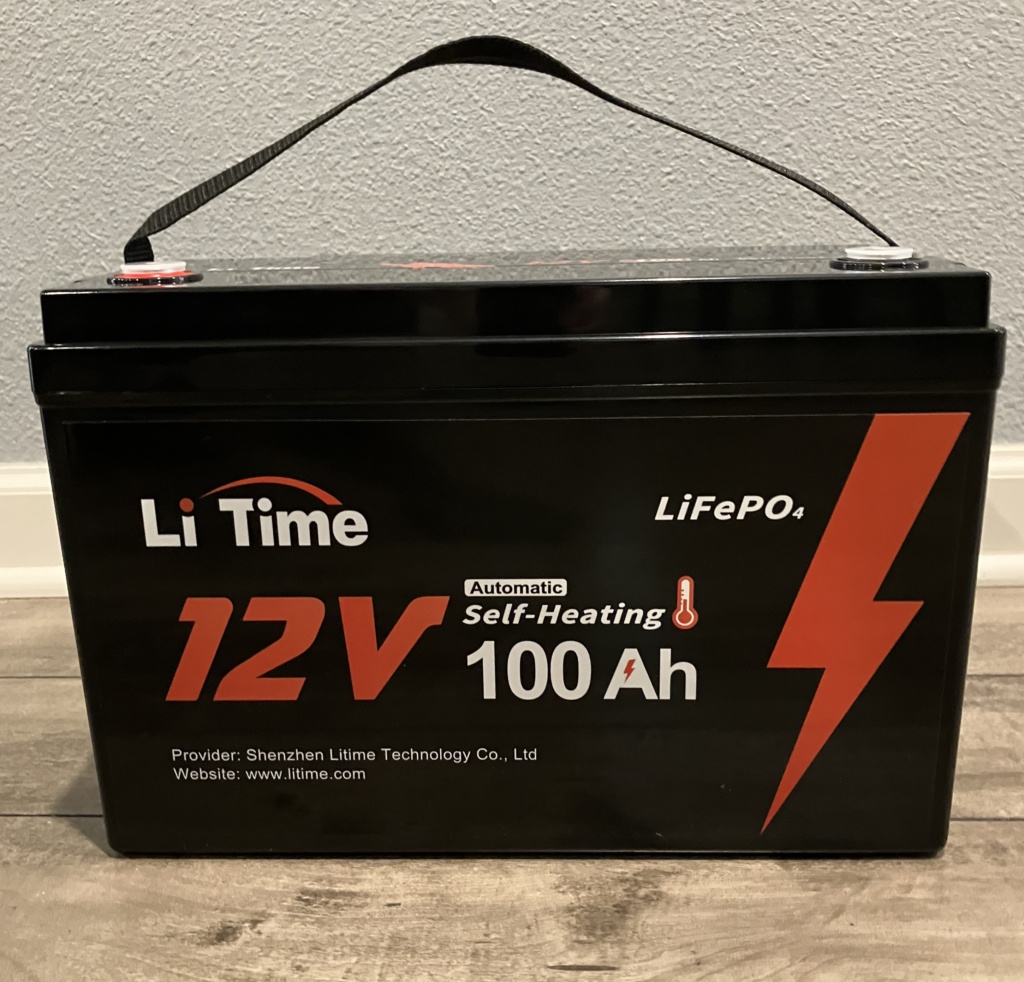
Lithium batteries are common in various items including your cell phone, laptop, and even AA batteries you use for household items. There is also a type of lithium battery that is ideal for travel trailers. This is the lithium iron phosphate battery, or LiFePo4.
Lithium batteries are much lighter, maintenance free, and can be mounted sideways or even upside down. They also do not need to vent gases like flooded lead acid and AGM batteries making them safer. That also means they can be installed in enclosed areas like your travel trailer’s pass through storage.
One of the downsides to lithium batteries is how capacity is tracked. In a flooded lead acid or AGM battery you can easily check the remaining capacity of the battery by measuring the voltage. It decreases steadily as it discharges. With lithium batteries the voltage doesn’t start dropping significantly until the final 20% of capacity, making it harder to measure how much is left. It is still possible to track the capacity, it just requires an extra item called a shunt. It goes between the battery and your battery monitor and measures the draw as your battery discharges.
Another downside is that your travel trailer’s converter may not be fully compatible with lithium batteries. They require a higher charging voltage to fully charge and the converters on older models aren’t capable of that. The good news is most of those older converters will still be able to charge a lithium battery to around 80%. Even with that limitation you could still get more usage out of a lithium battery than the same size flooded lead acid or AGM since you could discharge it the full 80% if needed. You also have the option of upgrading the converter, but be aware that will cost $250 or more depending on the model.
One final downside is that lithium batteries do not perform well in cold temperatures. Charging a lithium battery when the temperature is below 32º F can cause irreparable damage. Manufacturers offer a couple of options to help with cold temperatures.
One is low temperature protection in the BMS (Battery Management System) that will disable the ability to charge when it senses the battery temperature has dropped below safe levels. Another option is typically called self-heating and it adds small heating pads inside the battery to heat it when it detects low temperatures. Of course both of these options will cost a little more.
Pros:
- Lighter
- No maintenance required
- Can be discharged to 0% without damaging the battery
- Can be installed in enclosed areas and in multiple orientations
- Lasts longer
Cons:
- Expensive
- Requires extra hardware to accurately track capacity
- May require a new converter to fully charge if you have an older travel trailer
- Charging in cold weather can damage the battery
Choosing Capacity
Once you’ve decided what type of battery you want, it’s time to decide how much capacity, measured in amp hours, you will need. The answer to that question depends on several factors. Your budget, how often you plan to camp without hookups, how long those trips will be, and what you’ll be powering.
Things to consider when calculating your power needs include lights, water pump, microwave, refrigerator (if it runs on 12v power), slides, awning, radio, and the tongue jack. There are a few other things the battery powers that don’t draw much power, but wouldn’t work without the battery. Those include the heater fan, propane alarm, and the starter devices for the water heater and refrigerator.
Another consideration is if you have a generator that can be used to recharge your batteries while camping away from any other power source. If you do have a generator and it is capable of fully recharging your batteries, that could double the amount of time you can camp on battery power alone.
Conclusion
When we bought Shortstack it came with two 12-volt flooded lead acid batteries. I’m not sure what their capacity is because they are so old and not labeled well. But based on our first couple of trips I’m pretty sure they are damaged and/or near their end of life. After looking at all the options we decided to replace them with a LiFePo4 battery.
We ended up choosing the 100Ah self-heating battery with low temperature protection from LiTime. While the total amp hours are probably less than our current two 12v batteries, we will have more usable capacity. I’m currently making a custom battery box that will sit under our bed where the battery will live along with the monitor and disconnect switch. I’m excited to get it hooked up and take it out on the first trip. I’ll probably write another post about how that goes.
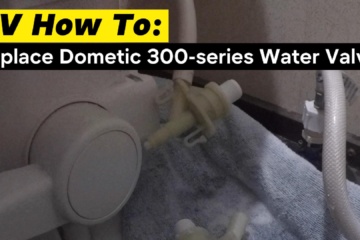

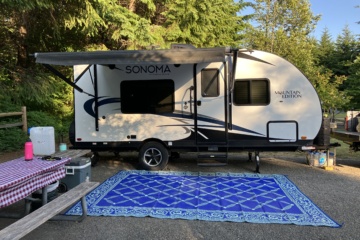
0 Comments